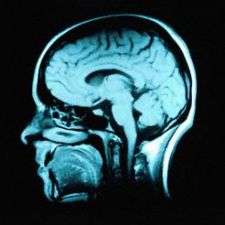How rabies "hijacks" neurons to attack the brain

Rabies causes acute inflammation of the brain, producing psychosis and violent aggression. The virus, which paralyzes the body's internal organs, is always deadly for those unable to obtain vaccines in time. Some 55,000 people die from rabies every year.
For the first time, Tel Aviv University scientists have discovered the exact mechanism this killer virus uses to efficiently enter the central nervous system, where it erupts in a toxic explosion of symptoms. The study, published in PLOS Pathogens, was conducted by Dr. Eran Perlson and Shani Gluska of TAU's Sackler Faculty of Medicine and Sagol School of Neuroscience, in collaboration with the Friedrich Loeffler Institute in Germany.
"Rabies not only hijacks the nervous system's machinery, it also manipulates that machinery to move faster," said Dr. Perlson. "We have shown that rabies enters a neuron in the peripheral nervous system by binding to a nerve growth factor receptor, responsible for the health of neurons, called p75. The difference is that its transport is very fast, even faster than that of its endogenous ligand, the small molecules that travel regularly along the neuron and keep the neuron healthy."
Faster than a speeding train
To track the rabies virus in the nervous system, the researchers grew mouse sensory neurons in an observation chamber and used live cell imaging to track the path taken by the virus particles. The researchers "saw" the virus hijack the "train" transporting cell components along a neuron and drove it straight into the spinal cord. Once in the spinal cord, the virus caught the first available train to the brain, where it wrought havoc before speeding through the rest of the body, shutting it down organ by organ.
Nerve cells, or neurons, outside the central nervous system are highly asymmetric. A long protrusion called an axon extends from the cell body to another nerve cell or organ along a specific transmission route. In addition to rapid transmission of electric impulses, axons also transport molecular materials over these distances.
"Axonal transport is a delicate and crucial process for neuronal survival, and when disrupted it can lead to neurodegenerative diseases," said Dr. Perlson. "Understanding how an organism such as rabies manipulates this machinery may help us in the future to either restore the process or even to manipulate it to our own therapeutic needs."
Hijacking the hijacker
"A tempting premise is to use this same machinery to introduce drugs or genes into the nervous system," Dr. Perlson added. By shedding light on how the virus hijacks the transport system in nerve cells to reach its target organ with maximal speed and efficiency, the researchers hope their findings will allow scientists to control the neuronal transport machinery to treat rabies and other neurodegenerative diseases.
Disruptions of the neuron train system also contribute to neurodegenerative diseases, like Alzheimer's disease, Parkinson's disease, and amyotrophic lateral sclerosis (ALS). According to Dr. Perlson, "An improved understanding of how the neuron train works could lead to new treatments for these disorders as well."

















